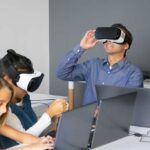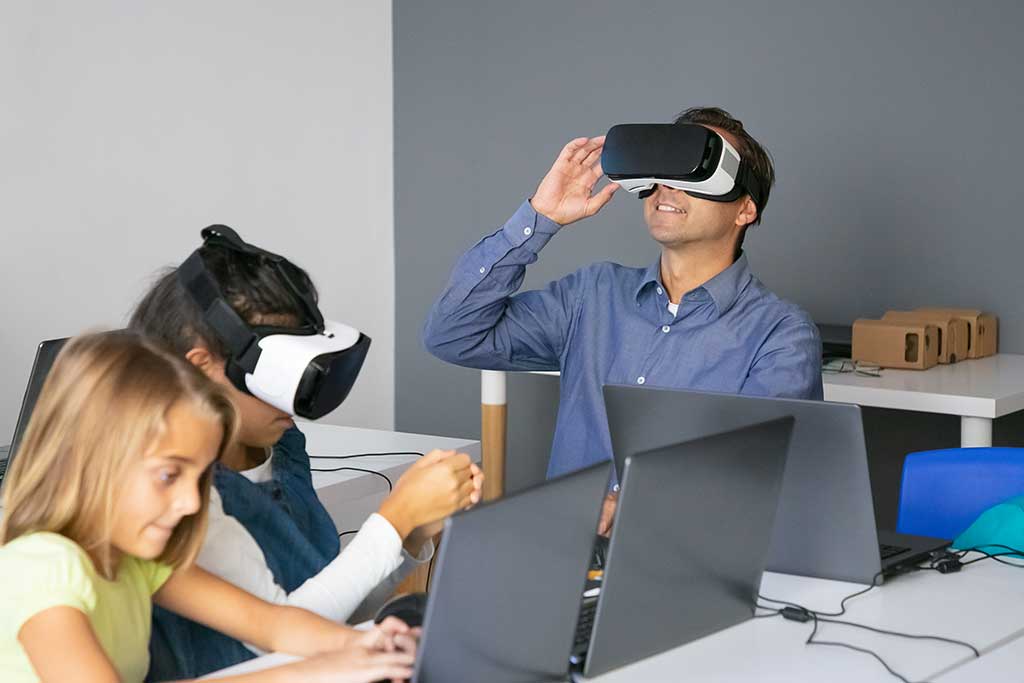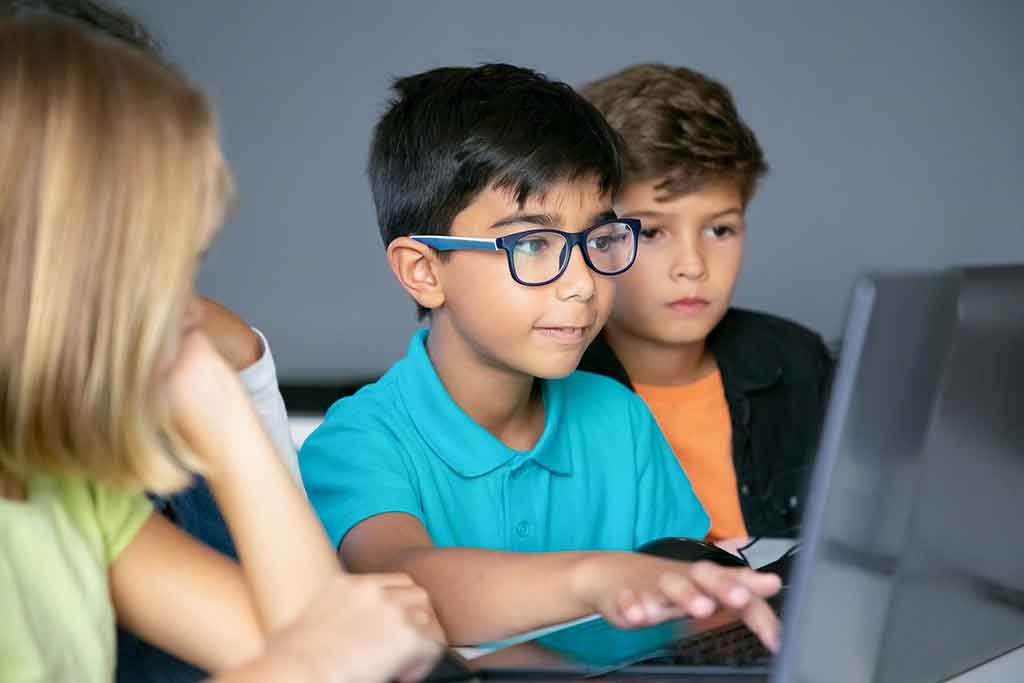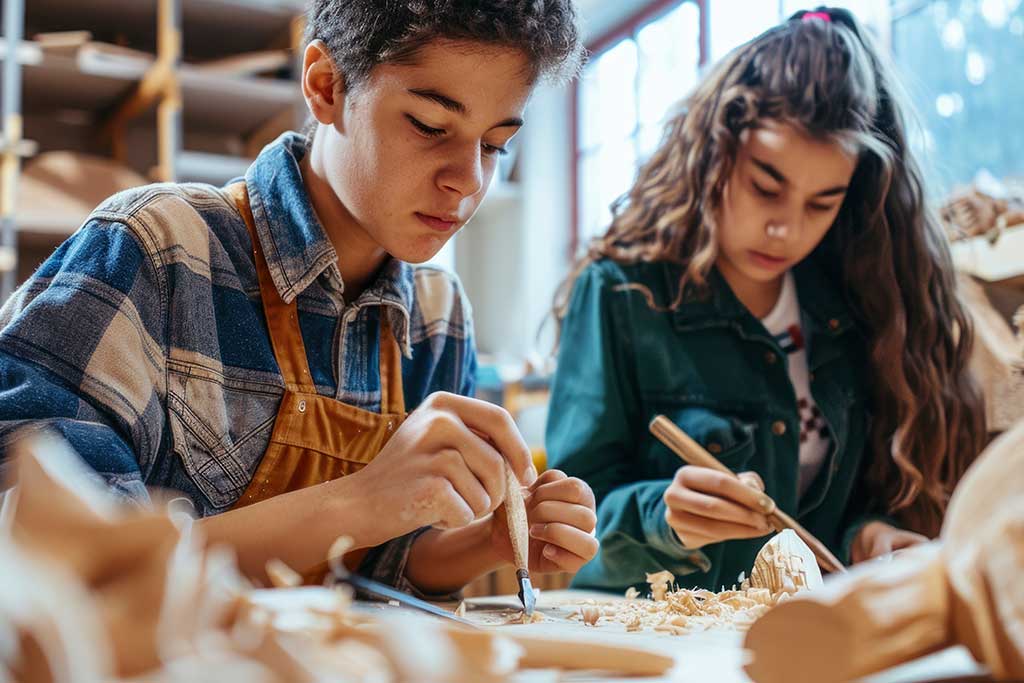Now Reading: Beyond the Hype: What Are EdTech Tools and How Are They Truly Transforming Learning?
-
01
Beyond the Hype: What Are EdTech Tools and How Are They Truly Transforming Learning?
Beyond the Hype: What Are EdTech Tools and How Are They Truly Transforming Learning?

The classroom of even two decades ago would be almost unrecognizable today. Gone are the days when educational technology meant a dusty overhead projector or a monthly trip to a computer lab with bulky, beige monitors. Today, technology is woven into the very fabric of learning, creating a dynamic and interconnected educational ecosystem. This transformation is powered by EdTech tools. But what are they, exactly? Beyond the buzzword, EdTech tools are the diverse array of software, hardware, and digital platforms designed specifically to enhance, support, and revolutionize the processes of teaching and learning.
At its core, EdTech is not about replacing educators or simply making old methods digital. It is about leveraging the power of technology to create more engaging, accessible, and personalized educational experiences. It represents a fundamental shift from a one-size-fits-all model of instruction to a more fluid, responsive, and student-centered approach. The goal is to empower both teachers and learners, providing them with resources that were once unimaginable.
Defining the Digital Classroom: More Than Just Gadgets
To truly understand EdTech tools, we must look beyond the simple definition. These tools exist on a spectrum, from applications that manage the administrative side of education to those that create immersive learning worlds for students. Fundamentally, they serve to facilitate, augment, and transform. They facilitate by streamlining communication between teachers, students, and parents through platforms like ClassDojo or Remind. They augment by providing interactive simulations that make abstract concepts in physics or biology tangible. They transform by using artificial intelligence to create a unique learning path for every single student, adapting in real-time to their strengths and weaknesses.
The philosophy behind this shift is rooted in constructivist theories of learning, where students build knowledge through experience and interaction. EdTech provides the toolkit for this construction. Instead of passively receiving information from a textbook, a student can now use a tool like Google Earth to take a virtual field trip to the Colosseum, manipulate a 3D model of a DNA strand in Labster, or collaborate with peers across the globe on a shared document to analyze a piece of literature. The classroom walls have dissolved, and the world—and indeed the universe—has become the learning environment.
The Core Functions of Modern EdTech Tools
While the landscape is vast and constantly evolving, most EdTech tools fulfill one or more of several key functions that support the modern learning journey. The first and perhaps most foundational function is Learning Management. This is the digital backbone of the classroom. Platforms like Google Classroom, Canvas, and Moodle provide a centralized hub where teachers can distribute assignments, collect work, post announcements, and grade submissions. For students, it creates a single, organized destination for all their course materials, deadlines, and feedback. This streamlines the logistical overhead of education, freeing up valuable time for actual teaching and learning.
The second critical function is content delivery and interaction. This is where the student experience is most directly shaped. Moving far beyond digital textbooks, this category includes tools like Nearpod or Pear Deck, which allow teachers to embed quizzes, polls, and collaborative boards directly into their lesson presentations, turning a lecture into a two-way conversation. It also encompasses vast libraries of adaptive learning content, such as Khan Academy, which offers practice exercises and instructional videos across a multitude of subjects. These tools ensure that content is not just consumed, but interacted with, questioned, and mastered.
Perhaps the most transformative function is that of personalization and differentiation. This is the frontier where EdTech moves from being a helpful aid to a revolutionary force. Adaptive learning platforms, such as DreamBox for math or i-Ready, use sophisticated algorithms to assess a student’s current understanding and then serve them precisely the lessons and practice problems they need to progress. They identify knowledge gaps and provide targeted intervention before a student falls irretrievably behind, and similarly, they can offer advanced material to students who have already mastered the core concepts. This allows a single classroom to effectively serve thirty individual learning journeys simultaneously, a task that is humanly impossible for a single teacher to manage with the same level of precision.
Furthermore, EdTech tools powerfully foster collaboration and communication. Learning is a social endeavor, and digital tools have expanded the boundaries of the collaborative group. Platforms like Padlet offer a virtual corkboard for sharing ideas and resources. Microsoft Teams or Slack-designed-for-education create spaces for persistent group discussion and project management. With these tools, students learn the vital 21st-century skills of digital communication, remote teamwork, and co-creating knowledge, preparing them for the modern workplace.
Finally, a growing category of tools focuses on assessment and feedback. Instead of relying solely on high-stakes tests at the end of a unit, tools like Kahoot! and Quizizz make formative assessment a fast-paced and engaging game. They provide teachers with instant data on what the class understands, right at that moment. Meanwhile, platforms like Turnitin do more than check for plagiarism; they facilitate the feedback process, allowing for detailed inline comments and rubric-based grading that helps students understand how to improve their writing iteratively.
The Human Element: The Irreplaceable Role of the Teacher
In any discussion of EdTech, a critical question arises: are these tools designed to replace teachers? The resounding answer is no. The most sophisticated adaptive learning algorithm lacks empathy, cannot see the spark of curiosity in a student’s eye, and cannot inspire a love for a subject through shared human passion. EdTech tools are best understood as a force multiplier for educators. They handle the data crunching, the routine practice, the administrative heavy lifting, and the provision of endless resources. This liberation allows teachers to do what they do best: mentor, motivate, facilitate deep discussions, provide one-on-one support, and build the strong, trusting relationships that are the true foundation of any successful learning environment. The teacher remains the conductor of the orchestra, while EdTech provides the instruments.
Challenges and Considerations on the Digital Path
The integration of EdTech is not without its significant challenges. The digital divide remains a pressing issue; access to reliable high-speed internet and modern devices is not universal, and equitably implementing these tools requires careful planning and investment from schools and communities. Furthermore, data privacy and security are paramount concerns. Schools and tool providers have a profound responsibility to protect the sensitive information of their students and to use data ethically to support learning, not for commercial exploitation.
There is also the danger of poor implementation. Simply throwing technology at an educational problem is a recipe for failure. Effective integration requires robust professional development for teachers, helping them move beyond using tech as a mere substitution for paper to leveraging it for true transformation. The goal is not to use the flashiest tool, but to select the right tool that aligns with a clear pedagogical objective.
The Future of Learning, Today
In conclusion, EdTech tools are far more than a collection of apps and websites. They represent a fundamental reimagining of the educational landscape. They are the platforms that manage learning, the interactive content that brings it to life, the adaptive engines that personalize it, and the collaborative spaces that connect learners. They are powerful, but they are not panaceas. Their ultimate value is not determined by their code, but by how they are used by skilled and caring educators.
When implemented thoughtfully and equitably, EdTech tools have the profound potential to unlock every student’s potential. They make learning more accessible for students with disabilities through assistive technologies, more engaging for the disinterested, and more challenging for the advanced. They prepare students not just with knowledge of history or mathematics, but with the digital fluency, critical thinking, and collaborative skills they will need to navigate and shape the future. The conversation, therefore, should not be about if we use technology in education, but how we can use it wisely to build a more effective, inclusive, and inspiring world of learning for all.
Stay Informed With the Latest & Most Important News
Previous Post
Next Post
-
 01Does Free Money Exist? The Real Story of How Your Passive Income Gets Taxed in India
01Does Free Money Exist? The Real Story of How Your Passive Income Gets Taxed in India -
 02Your Journey to Financial Freedom: A Simple Guide to Building Passive Income in India
02Your Journey to Financial Freedom: A Simple Guide to Building Passive Income in India -
 03Your Extra Income Journey: Top Side Hustles to Boost Your Earnings in India
03Your Extra Income Journey: Top Side Hustles to Boost Your Earnings in India -
 04Beyond the First Rupee: Building Your Personal System for Passive Income Success in India
04Beyond the First Rupee: Building Your Personal System for Passive Income Success in India -
 05The Right Way for Kids to Learn Technology: A Guide for Indian Parents
05The Right Way for Kids to Learn Technology: A Guide for Indian Parents -
 06A New World at Your Fingertips: A Simple Guide to Technology Tutorials for Seniors
06A New World at Your Fingertips: A Simple Guide to Technology Tutorials for Seniors -
 07Your Guide to Learning Technology in 2025: Simple, Smart, and Effective
07Your Guide to Learning Technology in 2025: Simple, Smart, and Effective





























